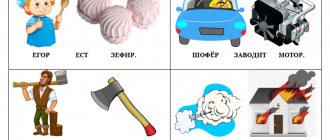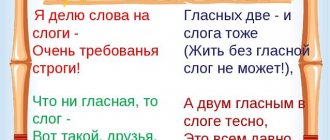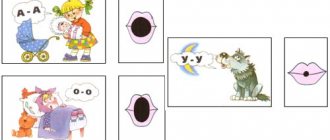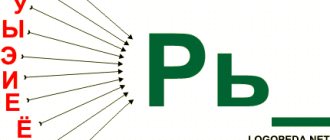To quickly divide words into syllables online, use the form below. You can enter multiple words into the text field separated by spaces or commas. When you click the "Split into syllables" button, the result will be shown instantly in the text field. The form is intended to highlight syllables only in Russian words typed in Russian letters.
It is more convenient to read phrases and sentences in which the words are divided into syllables according to the old rules. From the point of view of perception and ease of pronunciation, the old rules are more convenient than the new ones, so they are used in the form. However, individual words on our website are sorted according to new rules; you will find such words through the search form. See the rules for dividing into syllables for more details.
The form is convenient for cases in which it is necessary to break many words into syllables without details and background information. If you need to find out how many and what syllables are in words, what hyphenation options are available, then use the search form or select words by the number of syllables in them:
- 1 syllable
- 2 syllables
- 3 syllables
- 4 syllables
- 5 syllables
- 6 syllables
Note. 1. Do not use the result of dividing words into syllables to determine where words are hyphenated. Dividing into syllables and highlighting places where words are hyphenated are not always the same thing. The difference is explained in detail on our website (points 4-5 from the rules of division into syllables). 2. Division into syllables is carried out taking into account the rules of the school curriculum. Some rules may differ from the rules of the institute program and schools with in-depth study of the Russian language. For this reason, in some cases, syllables may not be highlighted in accordance with your knowledge of the rules for dividing words into syllables.
Open and closed syllables
Syllables can be open or closed. In Russian words, most syllables are open. Open syllables organize
- perch
- a-ir
- swamp
- fiber
Closed syllables form
- nail
- cover
- pigeon
- locomotive
- hundred-rozh
Unpaired voiced consonants [й'], [л], [л'], [м], [м'], [н], [н'], [р], [р'] can form a closed syllable in any phonetic positions: at the beginning, in the middle and at the end of words:
- mirror
- Bol-tick
- sa-ray-chik
- sa-ra-fan
Comparison of techniques
Comparison table of popular reading teaching methods.
| Method | Benefits for home use | Disadvantages for Homeschooling |
| Doman cards | You can practice from infancy. There is no need to obtain additional education or teaching skills. Classes are held daily, without special preparation for parents and children. | The method is based on photo memory. In the future, you will have to teach your child to read in a more classical way. |
| Zaitsev cubes | Suitable for hyperactive kids. The first lessons can be taught at an early age, after the child learns to sit. The technique combines the development of motor skills, speech apparatus, literacy, and phonemic hearing. | The technique is more effective when practiced in a group. |
| Reading by syllables | A simple technique known to all parents and grandparents. It is easily absorbed by preschoolers and does not require additional literature or equipment. Handmade cards, a notebook and a pen are suitable for lessons. | It is considered a universal technique, the best for Russian schools and home classes. |
| Reading by warehouses | Easily absorbed by children in a playful and serious form. | Most likely, the child will have to relearn at school, since reading is quite slow. |
| Zhukova's technique | The sound is emphasized, not the syllable. The child’s psyche is better prepared for this method. The primer is illustrated with bright pictures; it is interesting for a child to study with such a book. Zhukova does not advise rushing a child in learning to read; the transition to complex tasks is very soft and unhurried. | Parents should monitor the regularity of classes. Before starting Zhukova's alphabet lessons, you need to introduce your child to the alphabet. |
Syllable emphasis
Below we describe general approaches to highlighting syllables in words for the traditional school and with in-depth study. For detailed materials with explanations and examples, see the rules page for dividing words into syllables.
Traditional school
The main rule of the regular school curriculum, which the child is guided by: as many vowels, as many syllables. When translating words, they are guided by the rules: we transfer the word by syllables, you cannot leave one letter on a line. Everyone knows these rules.
When dividing a word into syllables, you can use the push method: we place our palm to our mouth and feel the push of air as we pronounce the word. Or we imagine a candle in front of us: the number of times the flame flickers, the number of syllables. For some words with flowing consonants, this option is not always suitable.
The principles of teaching division into syllables vary in different primary schools. In some schools, they are taught to visually divide a word into parts - vowel + consonant connectives (or vowel + several consonants). Other schools teach how to pronounce a word with pauses in a convenient way. Pauses create places for dividing syllables.
School of Advanced Study
In schools for in-depth study of the Russian language and in institute programs, cases are dealt with when words are not transferred into syllables, that is, the syllable of transfer does not coincide with the phonetic syllable.
The division of a word into syllables occurs in such a way that the syllable is pronounced in increasing order: from voiceless pronunciation to voiced pronunciation. Therefore, syllables consisting of several sounds always begin with a voiceless consonant and end with a vowel. For example: by mail (but not by mail), mo-shka (but not by mosh-ka). A syllable can end with a voiced consonant (sonorant r, l, m, n), which sounds less sonorous than a vowel, but louder than a voiceless consonant. For example: bun, cook.
How to determine how many syllables are in a word? There are as many syllables in a word as there are vowels
Examples of words with one syllable: sound, wolf, class, goose, hedgehog, elephant, beetle, spruce, beast, snake, table, mushroom, leaf, door, chair, house, elk, speech, stump, bison, cat, edge. Examples of words with two syllables: answer, vowel, bear, pit, stork, lesson, language, hare, hares, anchor, hedgehog, autumn, spinning top, nut, snake, fox, hawk, friends, teapot, squirrel, wasp, long, blow, Russian, window, Yura, watermelon, seagull, iron, willow, tree, notebook, carrot, fire, duck, skates, ear, school, bee, fly, June, box, blizzard, frost, boy, glass, days, fairy tale, blizzard, Julia, Yasha, deer, sun, family. Words with 3 syllables: teacher, cucumber, harvest, berry, which, apple, vegetables, sparrow, consonant, parrot, student, stressed, trees, pencil, Maria, alphabet, butterfly, line, pan, Russia, big, copybook , alley, Christmas tree. Words with four syllables: monkey, bicycle, acacia. Words with 5 syllables: stress, mathematics, literature, white-headed.
How to correctly divide words into syllables?
Words are divided into phonetic syllables according to the number of vowel sounds. A word contains as many syllables as there are vowels. One vowel sound surrounded by consonants creates a monosyllabic word that is not divided into syllables:
- som
- mole
- waltz
- ford
To be able to divide a word into syllables, it must have at least two vowel sounds that form two-syllable words:
- hedgehog
- do-mik
- salad
- rabbit
If a sonorant consonant is between two vowels, then
- crow
- pendant
- covet
- cla-nya-tsya (-tsya sounds like [tsa])
When dividing into syllables, we take into account that the syllable ends with a vowel, and the group of subsequent noisy consonants, in combination with or without a sonorant sound, moves off at the boundary of the syllable division to the next phonetic syllable:
- no-chnik
- roof
- cork
- Creation
Only unpaired voiced consonants in the middle of a word can close a syllable:
- alphabet
- construction
- quarter
- lan-dy-she-vy
- silent
If a word has the same consonants, then they begin the next phonetic syllable:
- program
- te-nnny-sny
- sneakers
- parallel
This division into syllables is phonetic, which does not coincide with the orthographic hyphenation of words with double consonants.
The letters “й”, “ь”, “ъ” belong to the syllable after which they are written:
- rail
- flakes
- departure
- lifting
Let us indicate the order in which words are divided into syllables using the following algorithm.
How to divide a word into syllables with a combination of consonants
How to divide a word into syllables if there are several consonants nearby in the middle? How to correctly break a word into syllables: cat or cat? You need to understand the principle of so-called greater sonority. It is observed in the second case. From consonant to vowel. First there is a dull sound, then a voiced consonant, and at the end a vowel - shka. The first syllable ends with a vowel (ko). Such syllables are called open. We have much more of them than those that end with consonants: table, chair (they are called closed syllables).
In the middle of a word, the syllable is usually open, that is, it ends with a vowel sound: stra-na. According to the principle of increasing sonority, all consonants move in most cases to the subsequent syllable: cat.
If several consonants are combined in the middle of a word, then all the consonants following the vowel go to the next syllable: o-flow. These can be the same consonants or simply combinations of different consonants: o-flow, sha-pka, ko-shka.
An exception to this point: only those syllables in the middle of a word that end with unpaired consonant voiced sounds (they are called very voiced, sonorant) end with a consonant: [й], [р], [р'], [л], [л '], [m], [m'], [n], [n']: may-ka, San-ka, man-ka.
If in a word several sounds merge into one sound, then they all go to one syllable: zhu-zhzh (Zh)at, distracted (CA). In these cases, one should not confuse division into syllables and morphemic division for transferring a word: for example, we divide o-teket by syllables, but for transfer we divide the same word like this - ot-tek.
Contents of the GDZ for the textbook “Russian Language”, grade 2, part 1, Klimanova
The answers are given to the first part of the textbook, everything clearly corresponds to it, including page numbers. Let's repeat the basic rules of spelling, we will write and copy texts, we will talk about the difference in sentences according to the purpose of the statement and about the types of texts. Sometimes teachers ask you to underline absolutely all available spellings, even if this is not indicated in the assignment. This, of course, is not taken into account by us, but if there are many orders (write your wishes in the comments and do not forget to indicate the page number and exercises), we will add this too.
Why be able to divide a word into syllables?
Isolation of syllables is important for the correct hyphenation of words; the syllabic principle is the main one in competent hyphenation, although not the only one. Both skills are important: identifying syllables in a word and the ability to find morphemes (meaningful parts of a word), because syllables and morphemes in many cases do not coincide. The syllable is not a prefix or root, or a suffix.
Division into syllables occurs when a word is pronounced. And dividing a word into parts is necessary for writing a word, that is, for writing letters in prefixes, roots, and suffixes.
Isolation of morphemes (prefixes, suffixes, roots) and syllables are two different actions, two different principles on the basis of which competent transfer of words is carried out.
For example, when transferring a word syllable by syllable, you need to simultaneously see the root and prefix, so that, for example, you do not tear off the first and last letter of the root or break a monosyllabic prefix.
There are a number of transfer rules that rely on the ability to divide a word into syllables and morphemes at the same time. Therefore, you need to be able to do one and the other.
Institute program
Syllables are divided according to ascending sonority. Each sound has a sonority from 1 to 4: 4 - vowels, 3 - sonorant, 2 - noisy voiced, 1 - noisy voiceless. The end of the syllable should be with maximum sonority (number 4): ko-le-so (14-34-14), computer (14-31 4-143).
There are rules for sonorants.
- Sonorants between vowels belong to the following syllable: karman (14-3343). The option is allowed: pocket (there will be no mistake).
- If there is a combination of sonorant and noisy, then the section is placed between them: par-ta (143-14).
- Y always remains with the previous syllable: tai-na (143-34).
These rules are studied in higher educational institutions, but recently there has been a borrowing of the institute curriculum by schools, especially in classes with a humanitarian bias.
The division is carried out according to the rules of the school curriculum and in-depth study of the Russian language. You can enter only one word and only in Russian letters. Foreign letters, numbers, spaces and other characters are not allowed.
Games
Game-based learning is considered the most effective. Do not waste time on educational entertainment for preschoolers, forget about boring lessons, then you will achieve success faster.
Letter learning games
- We draw letters, paint them, sculpt them. Use coloring books, prepare stencils yourself.
- Puzzles. Assembling letters from parts. Make the puzzles yourself and cut them into large pieces or buy teaching material at the store.
- Memory. Write down the letters on small pieces of paper. Lay out the cards on the table. Let the baby remember, then turn it over. Let him look for the desired letter according to the model.
- We write on sand and semolina. Attaching letters on loose material trains memory and motor skills at the same time.
Games for the ability to add syllables
- Collect the word. Syllables are laid out on cards in front of the preschooler. Task: collect words, one or more.
- Guess a riddle. In front of the baby there is a path of words, among them you need to find the hidden word.
- Word in word. The child is offered a long word, 12-15 letters. You need to make smaller words from it.
- Walking games. Prepare the playing field yourself. Write the letters in the empty cells. When walking the chip, the child reads the sounds, putting them into syllables.
To develop reading skills
- Sounds in a circle. Children need to come up with words that begin with the last letter of the previous word. For example, window-OSA-Album, etc.
- Reading with adults. The book is placed on the table so that the text is visible to the parent and baby. When one reads, the other follows. Stop unexpectedly and ask to continue. Attention and visual memory develop.
- We are looking for an error. Parents give the child a text with errors and catches. For example, KoSa ate all the grass in the field. Sol(b) was spilled onto the table. The child’s task is to find and correct the mistake while reading.
- Who's speaking? Animal toys and clean leaves will come in handy. Together with your child, sign the cards: Mee, Oink, Mu, etc. Empty will substitute the required syllable for the toys and read.







